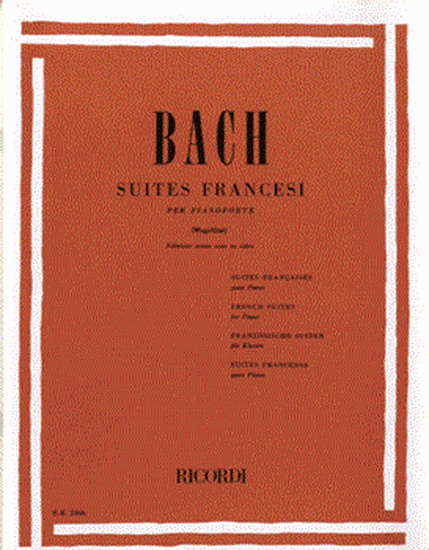Bach, Johann Sebastian : Französische Suiten Nr.4 Courante
Work Overview
Genre:courante
Total Playing Time:2 min 10 sec
Copyright:Public Domain
Commentary (1)
Author : Ooi, Kazurou
Last Updated: April 16, 2023
[Open]
Author : Ooi, Kazurou
The word "courante" is French, meaning light, fluent, or flowing. In contrast, the Italian "corrente" means "running." During the era of Louis XIV, the courante was the dance that Louis XIV excelled at the most. It was apparently a dance to showcase one's knowledge, intellect, and status, and was reportedly "not that fast."
Bach utilized both the French courante and the Italian corrente. The Italian-type courante is written in simple meter and is considered to have a fast tempo. Conversely, the French courante demands a flowing fluency, is not very fast, and is written in compound meter. This particular courante is an Italian courante, written in simple meter.
The rhythmic notation that most troubles the author in the score, and which also appears in this courante, is the triplet against a dotted eighth note plus a sixteenth note (e.g., measure 1, beats 2 and 3). In every recording listened to, the third note of this triplet perfectly aligns with the sixteenth note in the other voice.
A contradiction arises in the way the rhythm itself is written. A similar example is the coda of Chopin's Ballade No. 4. The same rhythm appears here, and again, the last note of the triplet and the note written after the dotted note do not shift. However, in the opening of Prokofiev's Concerto No. 2, first movement, I was once told in a competition that the rhythm must be shifted. The question then becomes how to judge this, but it seems the only way is to listen to many recordings, assume that this is a traditionally inherited practice, and accept it.
Therefore, in this courante, the dotted eighth note + sixteenth note and the last note of the triplet align perfectly. One simply has to accept it as such.
As you will realize when playing the piece, it is filled with a joy that suggests Bach was in a very good mood, at least.
Consider measures 11, 26, and 32, among others, as peak points, and add dynamics to give the piece direction.
PTNA & Partner Channel Videos(0items)
Sheet MusicView More
Scores List (20)

(株)全音楽譜出版社

(株)全音楽譜出版社

(株)全音楽譜出版社

(株)音楽之友社

ヘンレー

ヘンレー

ヘンレー

ヘンレー

(株)全音楽譜出版社

(株)全音楽譜出版社

ヘンレ社(ヤマハ)

ベーレンライター社

ヘンレ社(ヤマハ)

HAL・LEONARD

(株)新芸術社





